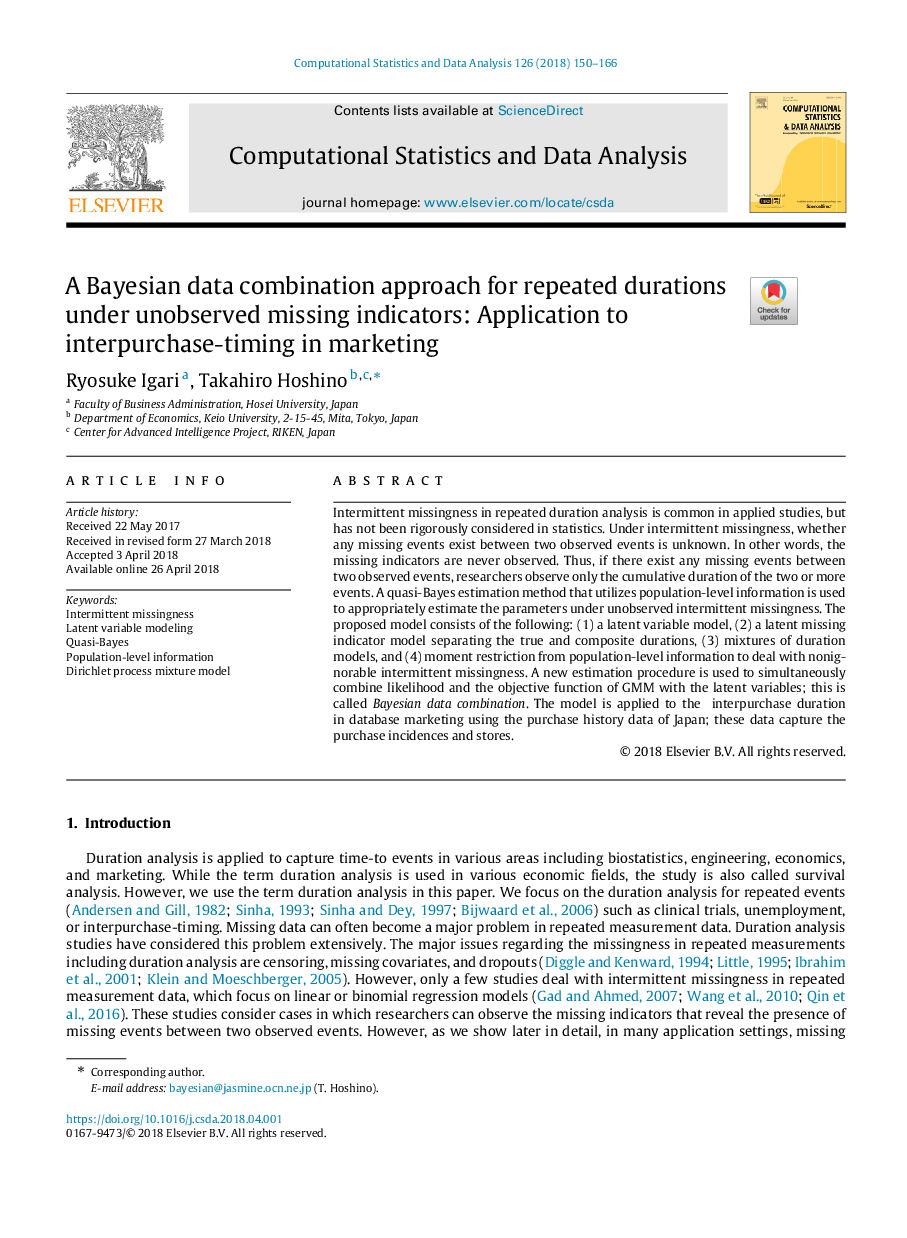| Article ID | Journal | Published Year | Pages | File Type |
|---|---|---|---|---|
| 6868662 | Computational Statistics & Data Analysis | 2018 | 17 Pages |
Abstract
Intermittent missingness in repeated duration analysis is common in applied studies, but has not been rigorously considered in statistics. Under intermittent missingness, whether any missing events exist between two observed events is unknown. In other words, the missing indicators are never observed. Thus, if there exist any missing events between two observed events, researchers observe only the cumulative duration of the two or more events. A quasi-Bayes estimation method that utilizes population-level information is used to appropriately estimate the parameters under unobserved intermittent missingness. The proposed model consists of the following: (1) a latent variable model, (2) a latent missing indicator model separating the true and composite durations, (3) mixtures of duration models, and (4) moment restriction from population-level information to deal with nonignorable intermittent missingness. A new estimation procedure is used to simultaneously combine likelihood and the objective function of GMM with the latent variables; this is called Bayesian data combination. The model is applied to the interpurchase duration in database marketing using the purchase history data of Japan; these data capture the purchase incidences and stores.
Related Topics
Physical Sciences and Engineering
Computer Science
Computational Theory and Mathematics
Authors
Ryosuke Igari, Takahiro Hoshino,
